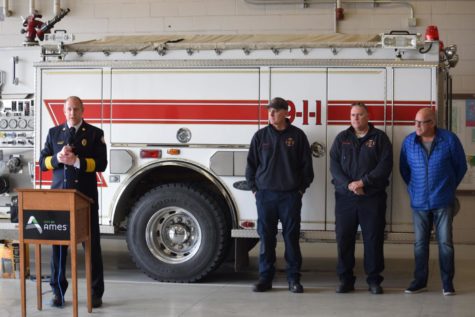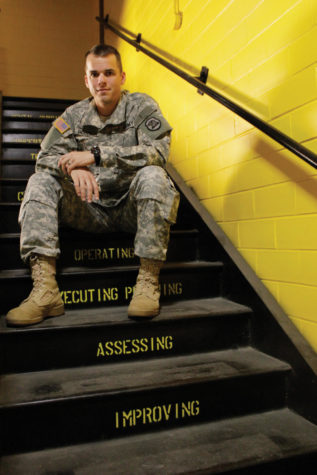Military, ISU ROTC program train soldiers in defense against war weapons
September 9, 2011
From weapons such rocket-propelled grenades to the lethal improvised explosive device, American soldiers face a variety of weapons in warfare.
IEDs are dangerous, homemade bombs that can be triggered by cellphones, act as landmines or even be worn.
“IEDs continue to be the most dangerous weapon currently used against our soldiers deployed overseas in both Iraq and Afghanistan,” said Master Sgt. Benjamin Pingel, adjunct instructor of military science and tactics.
Pingel said technology and training to defeat the weapon has greatly improved since the beginning of the current conflict.
“However, as we improve our procedures for detecting and defeating IEDs, the enemy also continues to refine and modify their own techniques to counter our success,” Pingel said.
Maj. Richard Smith, professor and chairman of military science and tactics, discussed some of the most common weapons seen during war.
Smith said the AK47 is popular for a few reasons; it’s hard for the gun to jam, it’s cheap to produce and they’re easy to use.
He said the recoilless rifle is another common weapon soldiers face. These large-caliber guns are used for both direct and indirect fire.
Recoilless rifles can be fired from the shoulder or fired while on top of a mount, such as a lightweight tripod. The weapons are made so they can be easily carried.
Smith said despite getting some media attention, anthrax isn’t commonly used.
While all these weapons can be lethal, Smith said the military has come up with ways to defend them.
For instance, soldiers and spotters are trained in what to look for when looking for roadside bombs.
Smith said they look for anything unusual, whether it is disturbed ground or suspicious behavior. If they spot anything, they call for a bomb technician to come and disarm the discovered roadside bomb.
He said the vehicles military personnel use also are designed to help defeat IEDs. The vehicles have thicker plating to help guard against explosions.
Smith said solders wear personal protective equipment, as well.
He said during a mission, a soldier could be wearing between 60 and 100 pounds of gear.
The ROTC at Iowa State helps prepare soldiers for combat.
“The key to our program is that the cadets run it,” Smith said. “We owe it to them, their parents, their spouses, to produce quality leaders … The best thing we have going out there is the soldiers.”









